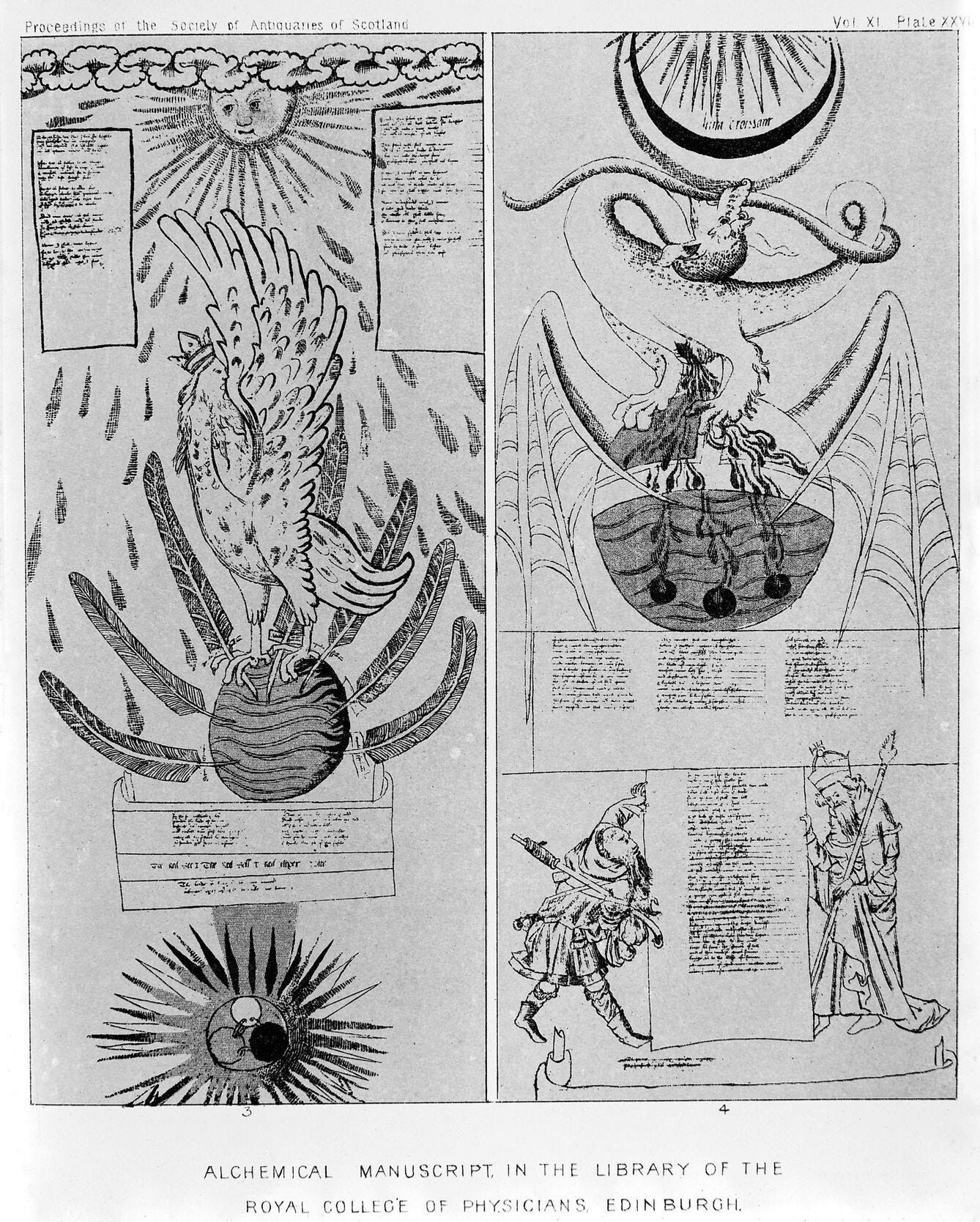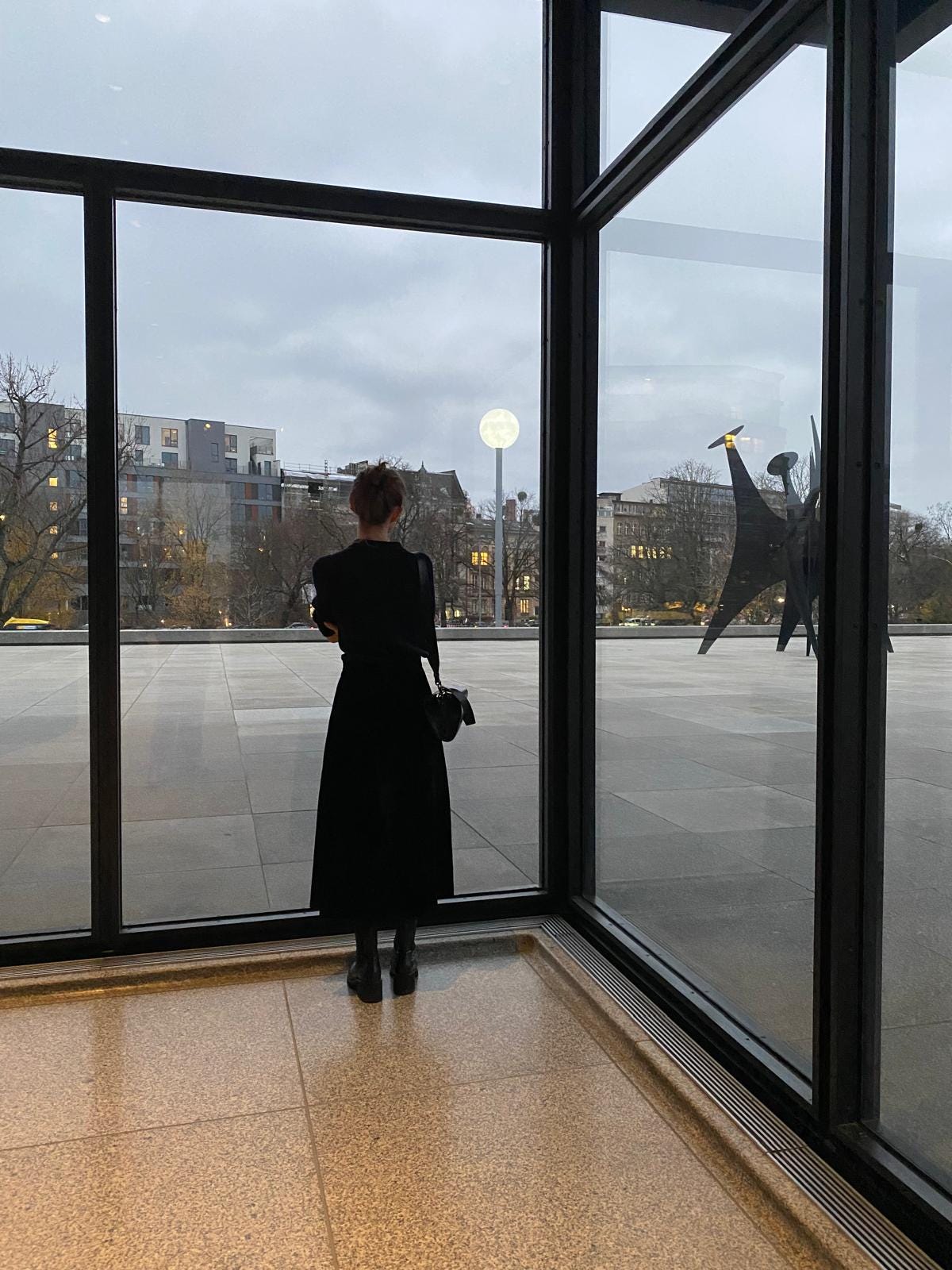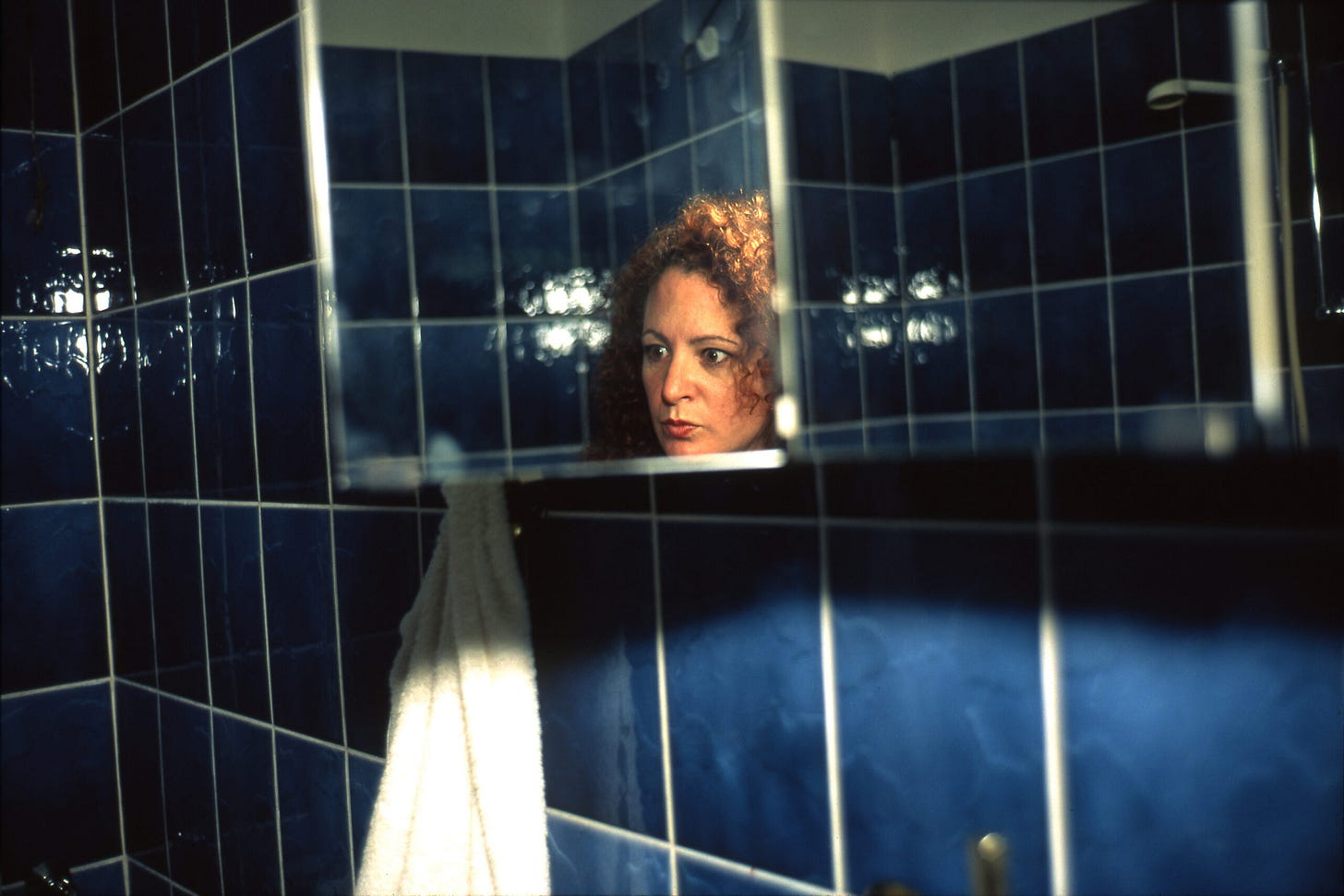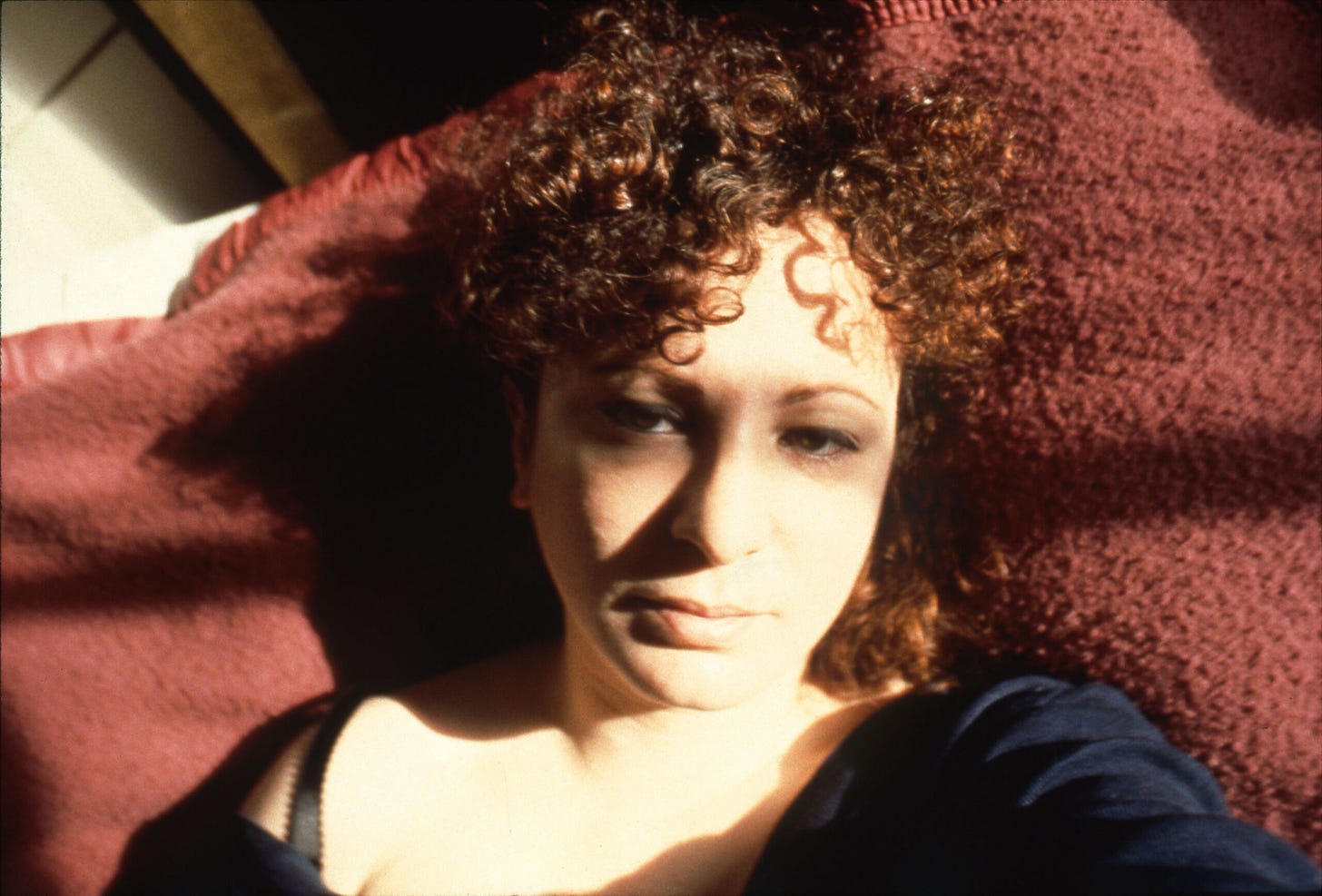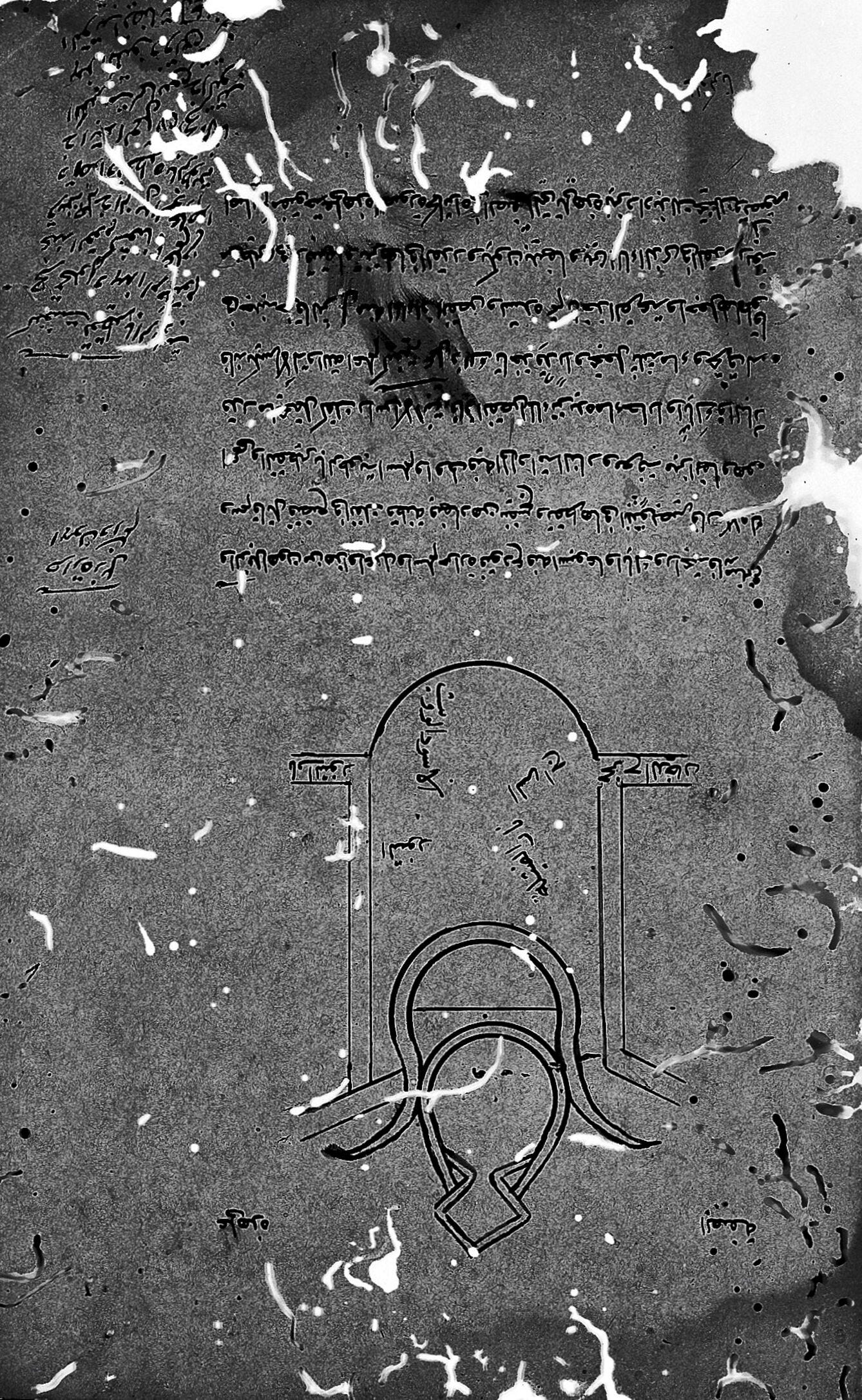Hello,
Curiously enough, it was a mint tea that delayed this newsletter by a week. Last Saturday morning, the tea was prepared in my friend’s Berlin kitchen and poured into a very professional Japanese thermos. One decision led to another, and the mean tea (as I amusingly mistyped) found its way through the professional lid that was just slightly askew. First, it spilled into my backpack, then into my laptop, all while I was, feeling very cozy, gazing out the train window on my way home. Bammm. I started the week with my computer undergoing a costly reincarnation. But it could have been worse.
At last, here is the new Soft Boiled, written for you in the darkest part of the year. Curiously, it’s an essay about transforming darkness into light.
Don’t forget that in just two weeks, the darkness will complete its cycle, and we’ll slowly move toward the light again. In the meantime, compost what you need to let go of and leave the dead weight for winter to take care of. Just like it does with fallen leaves that will nourish spring tulips from below…
With care,
Katarina
On Power
“Pain is important: how we evade it, how we succumb to it, how we deal with it, how we transcend it.”― Audre Lorde
We’re about forty strangers gathered in one room. Some sit on wooden benches, others on the carpet, while some lean against the wall. It’s dark, but all eyes glitter in the light coming from the screen. Together, alone, we watch a succession of photographs accompanied by a soundtrack. A new image appears every five seconds. The pictures are raw, intense. New York in the 70s. Berlin in the 80s. Snapshots of wild parties, drag queens, shiny makeup, bath foam and naked skin, bathrooms and living rooms, dirty mattresses, and stained walls. Hands, eyes, intertwined limbs, tits, asses. Glitter, snow, foam, light, darkness. Bruised eyes and bodies. Beach picnics and funerals. Sickness, orgasms. Happy faces, sad faces, hopeful faces, deranged faces. The whole spectrum of human experience—captured from within, frozen on celluloid film, with an uncompromising yet gentle eye.
My left hand rests in F.’s hand. He’s holding it tightly, a bit too tight, but the slight pain in my knuckles feels aligned with the poignancy and urgency rising from the images unfolding before us. They are anything but bleak—they swell with a heightened sense of presence, the rawness of experience. The author of the photographs appears in a few of them, but mostly she stays behind the camera. Behind, yet so close, incredibly close to the subjects she’s depicting—her friends, lovers, strangers. The artist goes all the way through. She wonders what’s on the other side. There must be something.
“Oh, you know what… There should be someone to take care of you after seeing the exhibition. It’s pretty intense,” I overhear a young guy telling his friend in the museum shop later. Standing across the same row of books, I look up at them and smile. Our eyes meet—a brief, silent kinship shared among the audience of this outrageously raw and beautiful ‘slideshow.’
Yes. It’s one of those rare, cathartic art experiences. You sit in the room, watching fragments of life ceaselessly shift before you. Your eyes are not allowed to rest; the pace is set. You witness what the photographer saw with her own eyes, and after a while—ready or not—things start to rise from the depths of your own interior.
It’s Friday, late afternoon—the day before the last day of November. The leaden gray sky, impenetrable, is visible through the glass walls of the Neue Nationalgalerie. And yet, this heavy winter sky offers a neutral, almost soothing surface for your eyes to rest on as you walk from one cathartic darkroom to another.
Against this sky, Isa Genzken’s full moon lamp silently glows.
Now we are in the room titled The Other Side. At some point, four girls walk in and sit right under the screen, on the carpet in front of us. They’re in their early twenties. I decide they must be best friends on a weekend trip to Berlin, or maybe they’re studying here. No, I think they must be on a journey because their bodies emanate the excitement of being in a new city. It’s that slight, almost imperceptible tension in the neck and shoulders, a heightened sense of awareness. The girls wear comfy winter shoes, their warm jackets now dropped on the floor. Their hair looks fresh.
Their presence distracts me. I watch them enthusiastically watching the screen, their mouths slightly open in wonder. After a while, the girl on the left side takes out a pack of chewing gum and shares it with the others. The gum rotates, and each girl drops one into her palm. Suddenly, they chuckle about something only they understand. It’s that perfect, equally banal and intimate moment of friendship. Something grips my chest from within as I secretly watch them exchanging little conspiratorial looks.
My mind starts to wander. I think of my friend Kata and the moments of secret conspiracy and naïveté we shared—things only we could understand, feeling recklessly empowered by each other’s presence. The zero f*cks given years we spent as the ultimate ‘BFFs.’ Sitting on the bench in the projection room, my hand still being squeezed tightly, I feel a gust of deep tenderness towards those girls I don’t even know the names of. And then, amidst all of this and the pure rawness of uncompromised life unfolding on the screen before us, a song starts to play from the other room. The sound is subdued, yet I recognize it within seconds. It’s a Cocteau Twins song, the one that played at my friend Kata’s funeral, on a January day, six years ago.
Oh—how can this be, this very song playing at this very moment? But how could this not be? I feel skinny streams pouring down my cheeks. Everything collides with one another, and only the slight pain in my knuckles keeps me anchored in real time. I’m now holding F.’s hand with both hands and not wanting to let go, I try to lick my tears away with the tip of my tongue.
“There should be someone to take care of you after seeing the show.“
‘The Other Side’ slideshow is over, and the temporarily gathered group of strangers begins to disintegrate. One by one, we leave the room. The exhibition is designed as a “village of slideshows.” You emerge from one ‘house’ and enter another, which seduces you with the colorful light glowing from its entrance.
Before we enter another room, we pass by the glass wall with the fake moon behind it, and I press the tip of my nose against the cold, vast sheet of glass. I do this involuntarily, but the sensation reminds me of the moment when, many years ago, my friend Kata shared with me her secret—putting the duvet out on her balcony on winter nights, then covering herself with it, feeling the chills. A form of self-soothing? A light, pleasant pain?
We continue through the show, looking at all the vulnerable, unapologetic, beautiful human beings Nan Goldin captured throughout her life as a photographer. Her approach was straightforward. Honest. She genuinely wanted to understand her reality by freezing moments in time. In doing so, she made people around her feel seen—and to be seen is to be valued.
The slideshow ‘Sisters, Saints, and Sibyls’ is the only one we won’t see because the room is always crowded. It’s an ode to the life of her sister, who took her own life when Nan Goldin was only eleven. But maybe what we’ve seen is already enough for one to absorb in one session.
Goldin has encountered much pain throughout her life. There was silence and dark family secrets suffocating her. She ended up in an orphanage, even though she had both parents. All this time, she was close to being consumed by darkness, and it was only her creative force that kept her afloat. Photography and friendships saved her during years that were bereft of joy.
Nan Goldin knows pain well, from the very bottom, like looking at tree roots from beneath the earth. She knows pain in many forms. For years, Goldin struggled with opioid addiction, specifically to OxyContin, a drug marketed by Purdue Pharma. Its founders, the Sackler family, profited massively from the widespread addiction, making fortunes from the pain of others. Goldin’s experience was one among 600,000 victims of the opioid epidemic, but she was one of the few with a public platform to speak out. Through her art and activism, she gave voice to those who were silenced. Her confrontation with the Sackler family, documented in the powerful film All the Beauty and the Bloodshed, became an epic example of empowerment.
For some years, I’ve been curious about how people navigate joy and how they navigate hurt. We all know the grumpy lady at the post office. I believe there are few truly evil people in this world. The angry people who show you their thorns are rarely bad inside; they are mostly unhappy. They didn’t have the strength, means, guidance, or luck to process their pain, and it turned into bitterness that poisons not just themselves, but everyone around them. Often, this is not a failure of the individual—it’s the system that ignites suffering but offers no way to heal it.
Some people are strong or lucky enough to perform the alchemy. They face the wounds and squeeze the gold out of the stone. They extract love and kindness from hurt.
What did Nick Cave do with his pain? What did Audre Lorde, James Baldwin, Sylvia Plath, and Patti Smith do with their pain? These names are well-known, but there are countless others whose stories we'll never hear. What did our grandmothers, mothers, fathers, and friends do with their pain?
My friend Eva unexpectedly lost her partner earlier this year. On Monday or Tuesday morning last week, as we sat in my kitchen, she asked me, “Did this ever happen to you?”
“What do you mean?” I said. “Did any of your friends ever lose a partner?” No, I had not experienced that before, I replied.
To witness grief from such a close distance and to try to stay near during the process of mourning—this is raw and messy. Friendship is tested. How do you create space for such deep grief? What is expected of you? What language do you use? What can you offer, and what’s real empathy—not the kind you always thought was empathy, the kind that only made you feel better?
But there’s something else. You see someone changing in front of your eyes; you witness the full scope of what that encompasses. You hear someone crying in the other room with a voice that doesn’t seem human, because in grief, we transform into other species. Grief is wild; it has the face and teeth of an animal. I’ve watched Eva sitting with that animal, alchemizing the pain into strength that has been building up inside her. I’m witnessing her go uncompromisingly, all the way through. “Grief is my kink,” she once said, joking—not joking.
To be present in someone’s grief zone is, metaphorically, like being there when someone is giving birth. You can suppress your loss, letting your pain continue to hurt those around you, or you can rebirth yourself anew. Grief makes you profoundly vulnerable, but it also offers access to the deepest layers of yourself—those parts activated only by radical experience. It’s tough work, like searching for water on a newly discovered planet, its surface dry as bone. You have to dig deep. And if you continue to rebirth yourself, emerging on the other side of the channel, you might find the strength that will empower others on their own journey.
The archetype of the Wounded Healer comes from Swiss psychiatrist Carl Gustav Jung. It represents someone who integrates pain and trials, rather than turning away from them. The Wounded Healer acknowledges their painful experiences and alchemizes the wound into the ability to heal others. This personal experience allows them to connect deeply with others. The archetype manifests in people around you—those transmuting pain into inner strength.
Power born from unprocessed pain is toxic, repeating and multiplying itself. You can see this in the people around you, we can see this in the 'big angry boys' who lead wars, or the 'girl bosses' who won’t let others rise. Unprocessed pain keeps on hurting—while cured pain empowers others.
On November 22, the artist and activist Nan Goldin gave a speech at the opening of her retrospective at the Neue Nationalgalerie in Berlin. She didn’t speak about her career, she didn’t mention her artwork and the slideshows in darkrooms, she spoke about the genocide in Gaza and Lebanon. Goldin’s voice is powerful because it comes from the core of her being—rooted in her integrity as both a human and an artist who has always explored the deepest layers of what it means to be human in this world. Her voice holds both urgency and kindness, because, yes, through the alchemy of pain, these two can still coexist.
P.S. You can listen to the whole speech here or read the transcription on The Culturist.




